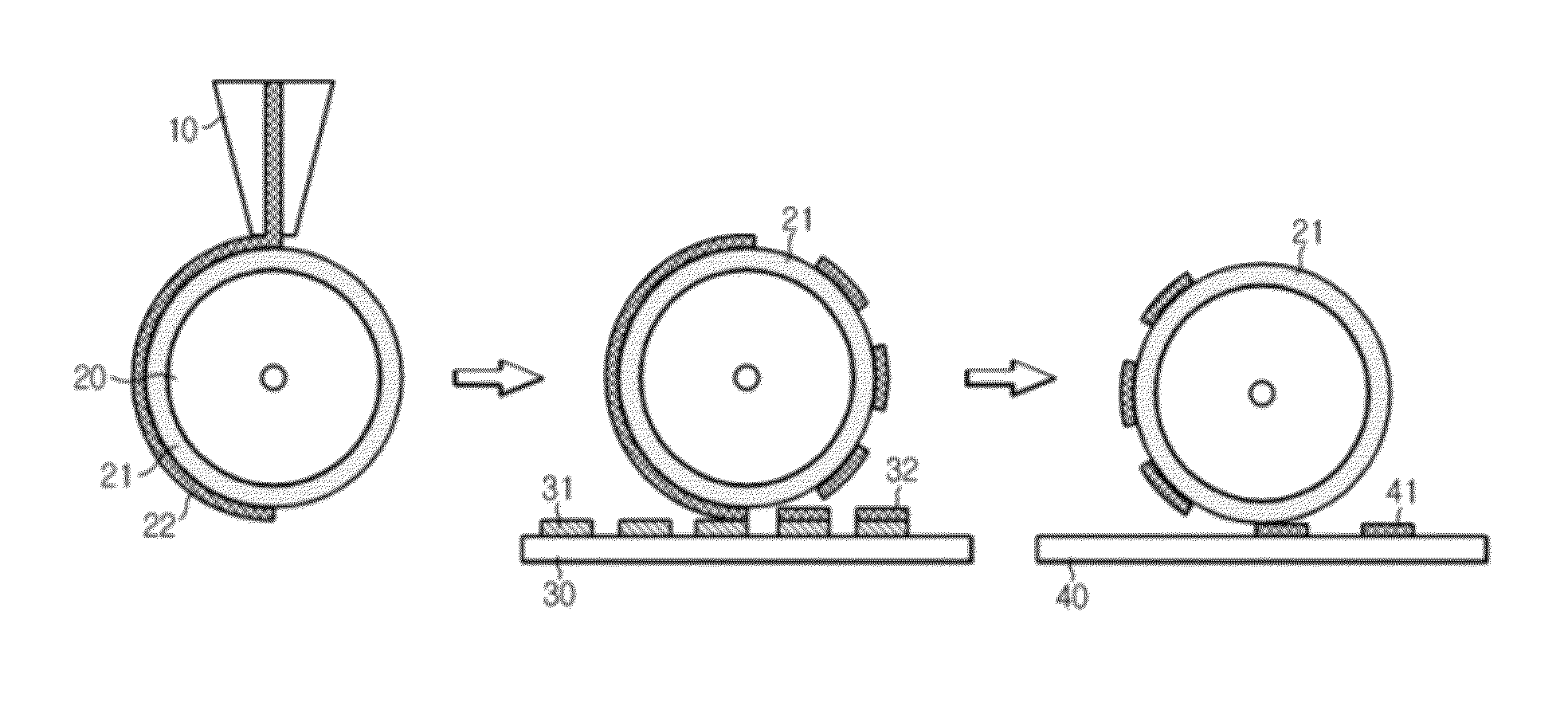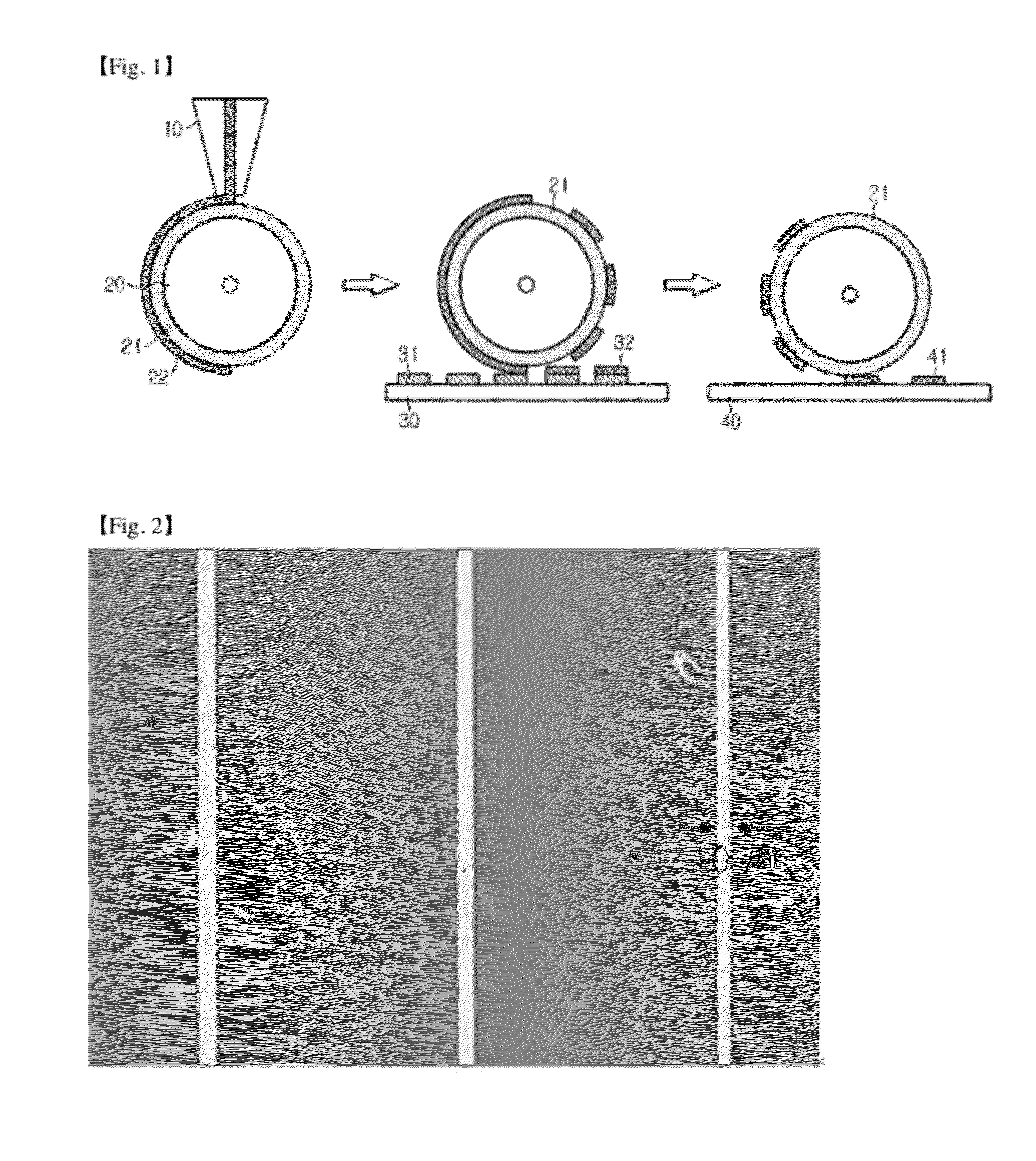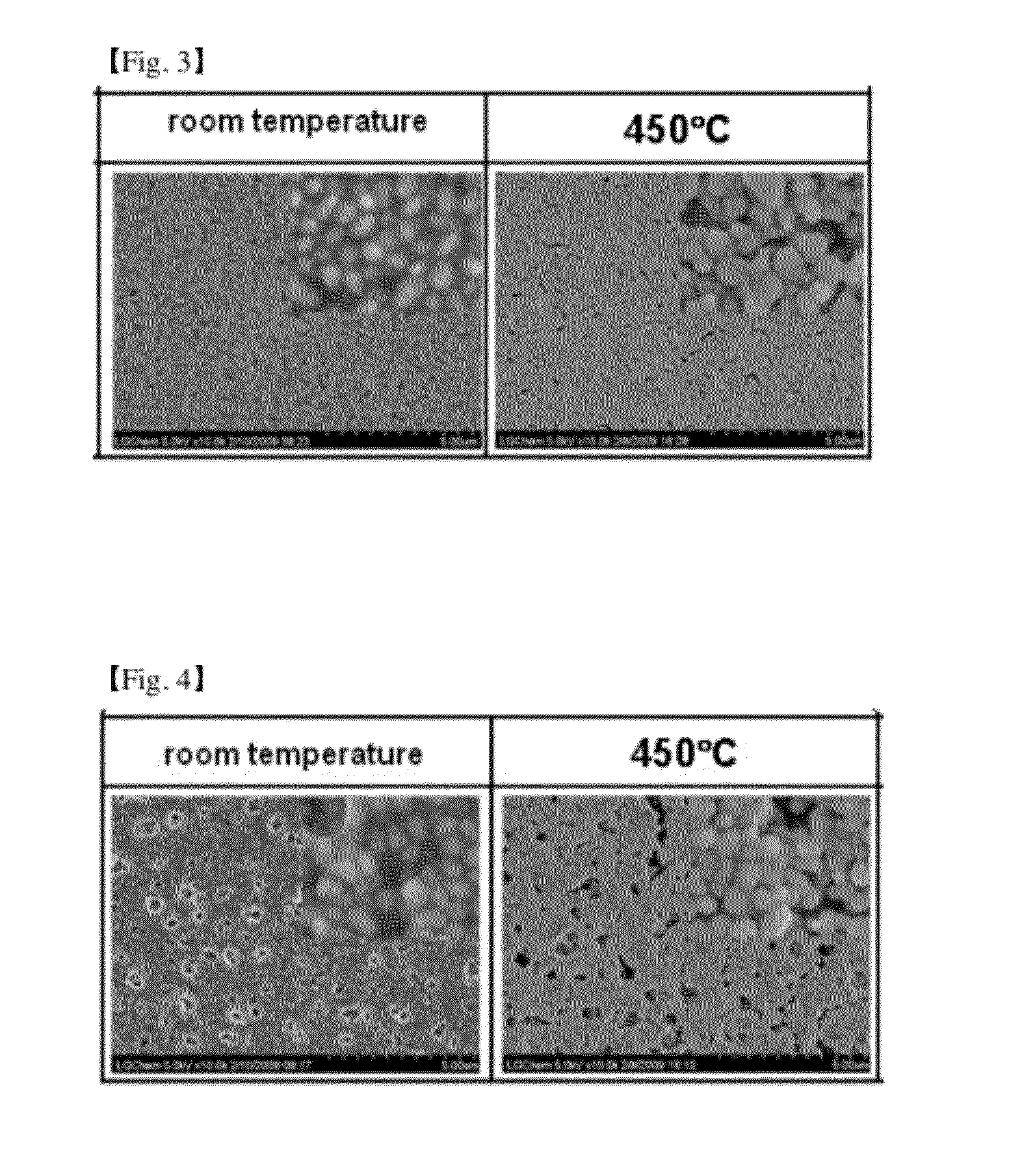Conductive metal ink composition and method for forming a conductive pattern
- Summary
- Abstract
- Description
- Claims
- Application Information
AI Technical Summary
Benefits of technology
Problems solved by technology
Method used
Image
Examples
example 1
[0063]Conductive Metal Ink Composition and Formation of Conductive Pattern
[0064]8.57 g of silver nanoparticle having an average diameter of 50 nm, 2.3 g of methyl cellosolve (vapor pressure of 6.2 torr at 25° C.), 7 g of ethanol (vapor pressure of 59.3 torr at 25° C.), 10 g of butyl cellosolve (vapor pressure 0.76 torr at 25° C.), 0.2 g of polydimethylsiloxane surfactant, and 0.7 g of phenol aldehyde novolac resin as a phenol polymer were mixed and agitated for 12 hours. 5 wt % of silver (Ag)(hexanoate)(diethanolamine)2 on the basis of weight of silver nanoparticle was added to the resulting solution, agitated for 12 hours, and filtered with a filter having a pore size of 1 μm to prepare the ink composition. The initial viscosity of the ink composition was measured according to the following method, and was 4.02 cPs.
[0065]The PDMS blanket of roller was coated with the ink composition, and was contacted with cliché having an intaglio pattern corresponding to the desired conductive pa...
example 2
[0066]Conductive Metal Ink Composition and Formation of Conductive Pattern
[0067]6.67 g of silver nanoparticle having an average diameter of 50 nm, 2.3 g of methyl cellosolve (vapor pressure of 6.2 torr at 25° C.), 7 g of ethanol (vapor pressure of 59.3 torr at 25° C.), 10 g of butyl cellosolve (vapor pressure 0.76 torr at 25° C.), 0.2 g of polydimethylsiloxane surfactant, and 0.7 g of phenol aldehyde novolac resin as a phenol polymer were mixed and agitated for 12 hours. 5 wt % of silver (Ag)(hexanoate)(diethanolamine)2 on the basis of weight of silver nanoparticle was added to the resulting solution, agitated for 12 hours, and filtered with a filter having a pore size of 1 μm to prepare the ink composition. The initial viscosity of the ink composition was measured according to the following method, and was 3.63 cPs.
[0068]The PDMS blanket of roller was coated with the ink composition, and was contacted with cliché having an intaglio pattern corresponding to the desired conductive pa...
example 3
[0069]Conductive Metal Ink Composition and Formation of Conductive Pattern
[0070]6.67 g of silver nanoparticle having an average diameter of 50 nm, 2.3 g of methyl cellosolve (vapor pressure of 6.2 torr at 25° C.), 7 g of ethanol (vapor pressure of 59.3 torr at 25° C.), 10 g of butyl cellosolve (vapor pressure 0.76 torr at 25° C.), 0.2 g of polydimethylsiloxane surfactant, and 0.7 g of phenol aldehyde novolac resin of phenol polymer were mixed and agitated for 12 hours. 5 wt % of silver (Ag)(propionate)(diethanolamine)2 on the basis of weight of silver nanoparticle was added to the resulting solution, agitated for 12 hours, and filtered with a filter having a pore size of 1 μm to prepare the ink composition. The initial viscosity of the ink composition was measured according to the following method, and was 2.97 cPs.
[0071]The PDMS blanket of roller was coated with the ink composition, and was contacted with cliché having an intaglio pattern corresponding to the desired conductive pat...
PUM
 Login to View More
Login to View More Abstract
Description
Claims
Application Information
 Login to View More
Login to View More - R&D
- Intellectual Property
- Life Sciences
- Materials
- Tech Scout
- Unparalleled Data Quality
- Higher Quality Content
- 60% Fewer Hallucinations
Browse by: Latest US Patents, China's latest patents, Technical Efficacy Thesaurus, Application Domain, Technology Topic, Popular Technical Reports.
© 2025 PatSnap. All rights reserved.Legal|Privacy policy|Modern Slavery Act Transparency Statement|Sitemap|About US| Contact US: help@patsnap.com



